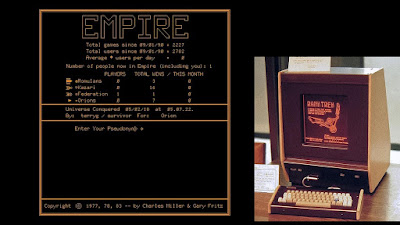
Video games as we all know it now, owe their early invention to a Sanders Associates Inc. engineer, Ralph Baer. He and his team released his prototype, the “Brown Box”, in 1967. The “Brown Box” as it was then, was a TV connectable vacuum tube-circuit that could allow for two users to control cubes that pursued each other on the television screen. “Brown Box” at that time, had the ability for custom re-programming, to allow for the play of a variety of games, including table tennis, checkers and four sports games.
With the help of advanced technology available at that time, accessories including a light-gun for a target shooting game was added, and a the special attachment used for a golf putting game.
However, In 1972, Sanders Inc. licensed the system to Magnavox. Magnavox released the design as the Magnavox Odyssey, paving the way for all video game systems that followed.
After Magnavox was discontinued, due to the poor sales recorded, Sega was birthed. Sega and Taito were the first companies to grab the attention of the public, with respect to entertainment, when they released the electro-mechanical games Periscope and Crown Special Soccer.
How Multi-Player Gaming Originated
In the late 1970s, a couple of restaurants in the U.S. commenced the installation of video games. This was due to a need ‘to capitalize on the hot new craze’. This innovation birthed the need for competition among players, who battled to beat and stay permanently at the top of the score table. At that time, multiplayer gaming only meant one thing — you’re stuck with gaming with your opponent ‘on the same screen’.
In 1973, an attempt to separate players from the same screen was made, with the creation of “Empire”— a strategic turn-based game for up to eight players — which was created for the PLATO network system. PLATO which is the acronym for: Programmed Logic for Automatic Teaching Operation, was one of the first generalized computer-based teaching systems, initially developed by The University of Illinois, but later taken over by Control Data (CDC), who ended up building the machines on which the system ran.
A quick look at the data usage log available on the PLATO system, a total amount of 300,000 user hours was spent, playing Empire between 1978 and 1985. In 1973, Jim Bowery released Spasm for PLATO — a 32-player space shooter — which is can pass as the genesis of a 3D multiplayer game.
While access to PLATO was daunted by factors like it’s high cost, we saw usage to be practically limited to large organizations such as universities, and Atari, who could fund the cost of the computers and connections necessary to connect the network.
PLATO can, however, be said to represent one of the first steps on the technological road to the Internet, and online multiplayer gaming as we know it today.
Early Setbacks Of Video Game
In 1983, the North American video game industry suffered a “major setback” because of a dozen factors, which includes an inundation of game console market, competition from computer gaming, and a excess of over-hyped and overrated , low-quality games, such as the infamous E.T., an Atari game based on the eponymous movie. It’s considered the worst game ever, in the history of game creation.
In 2006, Ralph Baer donated his video game test units, production models, schematics and notes, to the Smithsonian’s National Museum of American History — as a way of paying tribute to his great entertainment innovation. His papers are kept in the Museum's Archives Center. In 2014, the Museum collected his workshop to become the landmark object for its Innovation Wing.

References: 1, 2 and 3


















how do i learn
ReplyDeleteI love visiting sites in my free time. I have visited many sites but did not find any site more efficient than yours. Thanks for the nudge! Ludo King Mod
ReplyDelete